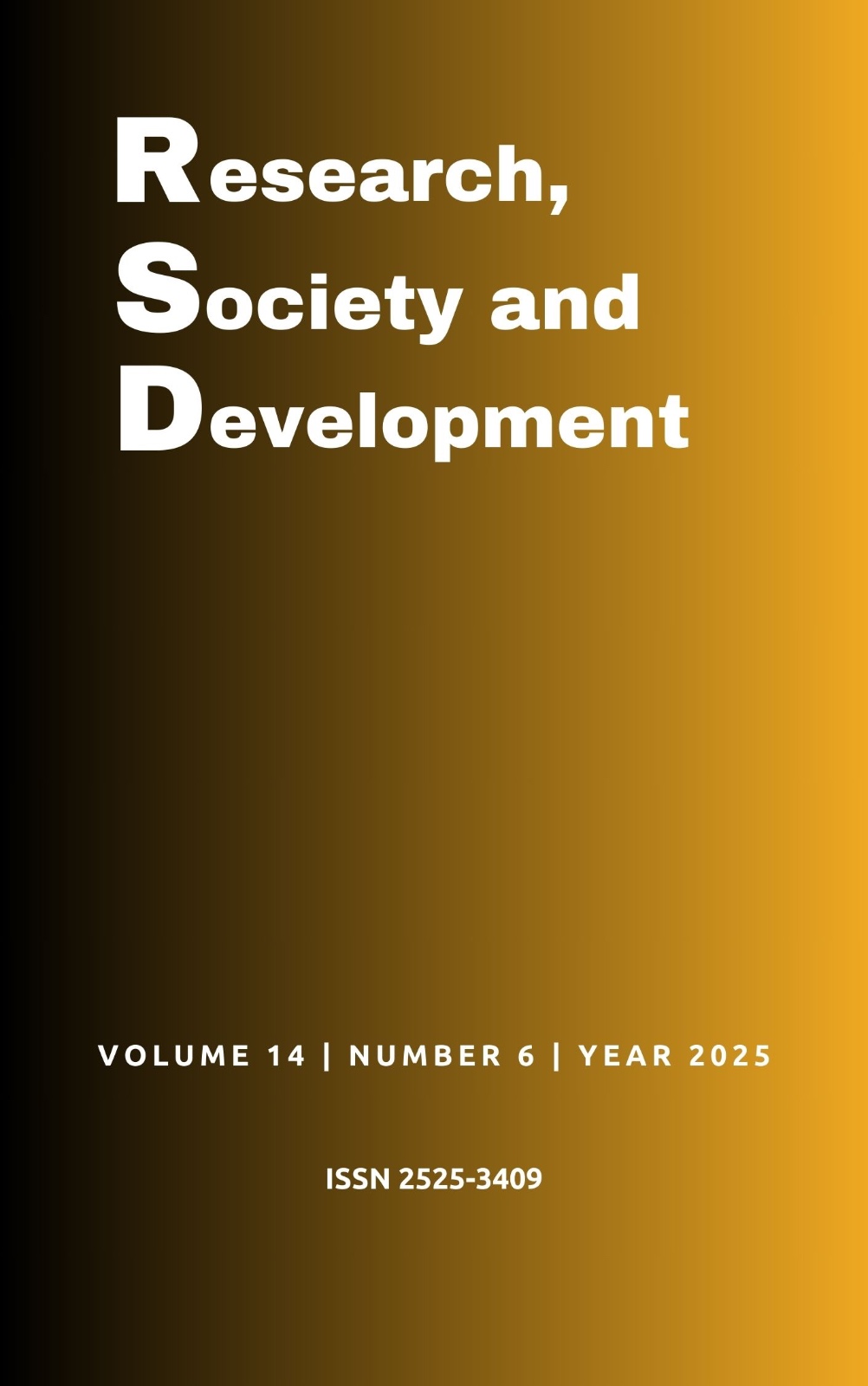Narcolepsia post-COVID-19, reporte de un caso clínico
DOI:
https://doi.org/10.33448/rsd-v14i6.48848Palabras clave:
Narcolepsia, COVID-19, Infección, Insomnio, Sueño REM.Resumen
Objetivo: El objetivo de este artículo fue reportar el caso de un adolescente que desarrolló narcolepsia luego de una infección con COVID-19 y no existían otras infecciones que pudieran justificar el caso. Metodología: la información se obtuvo mediante revisión de historias clínicas, registro de preceptos diagnósticos y revisión de la literatura. Reporte de caso: Paciente B.M.C, femenino, 16 años, acude a consulta por episodios de narcolepsia. Consideraciones finales: el caso reportado y las publicaciones suscitadas arrojan luz sobre la posibilidad de que la infección por COVID-19 también cause narcolepsia, que es una nueva forma de desencadenar esta patología.
Descargas
Referencias
Alóe, F., Alves, R. C., Araújo, J. F., Azevedo, A., Bacelar, A., Bezerra, M., Bittencourt, L. R. A., Bustamante, G., Cardoso, T. A. M. de O., Eckeli, A. L., Fernandes, R. M. F., Goulart, L., Pradella-Hallinan, M., Hasan, R., Sander, H. H., Pinto Jr., L. R., Lopes, M. C., Minhoto, G. R., Moraes, W., & Moreira, G. A. (2010). Diretrizes brasileiras para o diagnóstico de narcolepsia. Brazilian Journal of Psychiatry. 32(3), 294–305.
Bayon V, Damien Léger D, Philip P. (2009). Socio-professional handicap and accidental risk in patients with hypersomnias of central origin. Sleep Med. 13(6), 421-6.
Brundin, L., Björkqvist, M., Petersén, Å. & Träskman-Bendz, L. (2007). Reduced orexin levels in the cerebrospinal fluid of suicidal patients with major depressive disorder. European Neuropsychopharmacology. 17(9), 573–9.
Chemelli, R. M., Willie, J. T., Sinton, C. M., Elmquist, J. K., Scammell, T., Lee, C., Richardson, J. A., Williams, S. Clay., Xiong, Y., Kisanuki, Y., Fitch, T. E., Nakazato, M., Hammer, R. E., Saper, C. B., & Yanagisawa, M. (1999). Narcolepsy in orexin Knockout Mice. Cell. 98 (4), 437–51.
Complex HLA-DR and -DQ Interactions Confer Risk of Narcolepsy-Cataplexy in Three Ethnic Groups. (2001). The American Journal of Human Genetics. 68(3), 686–99.
Dauvilliers, Y. & Arnulf, I. (2008). Narcolepsie avec cataplexie. Revue Neurologique. 164(8-9), 634-45.
de Almeida Andrade, P. H., Rodrigues Morais de Oliveira, M., Diniz Morais, S. M., Aguiar Gripp Junior, F. & Gonçalves Nobre, A. F. (2024). Doenças Autoimunes: Atualização no Diagnóstico e Tratamento em Clínica Geral. Brazilian Journal of Implantology and Health Sciences. 6(10), 1999–2009.
Franceschini, C., Pizza, F., Cavalli, F. & Plazzi, G. (2021). A practical guide to the pharmacological and behavioral therapy of Narcolepsy. Neurotherapeutics. 18(1), 6-19. doi: 10.1007/s13311-021-01051-4.
Frauscher, B., Ehrmann, L., Mitterling, T., Gabelia, D., Gschliesser, V., Brandauer, E., Poewe, W., & Högl, B. (2013). Delayed Diagnosis, Range of Severity, and Multiple Sleep Comorbidities: A Clinical and Polysomnographic Analysis of 100 Patients of the Innsbruck Narcolepsy Cohort. Journal of Clinical Sleep Medicine.
Goldman, L., & Schafer, A. I. (2019). Goldman-Cecil medicine. Elsevier, Inc. 6598-6600.
Heydendael, W., Sengupta, A., Beck, S. & Bhatnagar, S. (2014). Optogenetic examination identifies a context-specific role for orexins/hypocretins in anxiety-related behavior. Physiology & Behavior. 130, 182–90.
Huang, Y.-S., Guilleminault, C., Lin, C.-H., Chen, C.-H., Chin, W.-C. & Chen, T.-S. (2018). Multiple sleep latency test in narcolepsy type 1 and narcolepsy type 2: A 5-year follow-up study. Journal of Sleep Research. 27(5), e12700.
Ito, E. & Inoue, Y. (2015). [The International Classification of Sleep Disorders, third edition. American Academy of Sleep Medicine. Includes bibliographies and index. Nihon Rinsho. Japanese Journal of Clinical Medicine. 73(6), 916–23.
Jameson, J. (2019). Harrison’s manual of medicine. (20th ed.). McGraw-Hill, Ed. 740-5.
Kawai, M., O’Hara, R., Einen, M., Lin, L. & Mignot, E. (2015). Narcolepsy in African Americans. Sleep. 38(11), 1673–81.
Kornum, B. R. & Jennum, P. (2020). The case for narcolepsy as an autoimmune disease. Expert Review of Clinical Immunology, 16(3). https://doi.org/10.1080/1744666X.2020.1719832.
Medeiros, M. R. B. & Silva, R. C. L. M. & Almondes, K. M., K. (2022). Narcolepsia na Infância: A Atuação Multidisciplinar com a Psicologia do Sono do Diagnóstico ao Tratamento em um Relato de Caso. Psicologia: Ciência E Profissão, 42.
https://doi.org/10.1590/1982-3703003243224. https://www.scielo.br/j/pcp/a/yzpGRdW63cMNt78CFKW7cMm/abstract/?lang=pt.
Morgadinho, F., Coelho, S., Motta Elias, R., Pradella-Hallinan, M., Rita, L., Bittencourt, A. & Tufik, S. (2007). Revisão da Literatura Narcolepsia Narcolepsy. Arch. Clin. Psychiatry (São Paulo) 34(3). https://doi.org/10.1590/S0101-60832007000300005.
Morgenthaler T I, Kapur V K, Brown T, Swick T J, Alessi C, Aurora R N, Boehlecke B, Chesson A L Jr, Friedman L, Maganti R, Owens J, Pancer J, Zak R. (s.d.). Standards of Practice Committee of the American Academy of Sleep Medicine. Practice parameters for the treatment of narcolepsy and other hypersomnias of central origin. Sleep, 30(12), 1705-11.
Pereira A. S. et al. (2018). Metodologia da pesquisa científica. [free e-book]. Editora UAB/NTE/UFSM.
Quaedackers, L., Pillen, S. & Overeem, S. (2021). Recognizing the Symptom Spectrum of Narcolepsy to Improve Timely Diagnosis: A Narrative Review. Nature and Science of Sleep. 13, 1083–96.
Roya, Y., Farzaneh, B., Mostafa, A-D., Mahsa, S. & Babak, Z. (2023). Narcolepsy following COVID‐19: A case report and review of potential mechanisms. Clinical Case Reports. 1 (6), e7370. doi: 10.1002/ccr3.7370. https://pmc.ncbi.nlm.nih.gov/articles/PMC10213711/
Descargas
Publicado
Número
Sección
Licencia
Derechos de autor 2025 Rodrigo Henrique Nogueira Mamédio; Rafael Vinhal da Costa

Esta obra está bajo una licencia internacional Creative Commons Atribución 4.0.
Los autores que publican en esta revista concuerdan con los siguientes términos:
1) Los autores mantienen los derechos de autor y conceden a la revista el derecho de primera publicación, con el trabajo simultáneamente licenciado bajo la Licencia Creative Commons Attribution que permite el compartir el trabajo con reconocimiento de la autoría y publicación inicial en esta revista.
2) Los autores tienen autorización para asumir contratos adicionales por separado, para distribución no exclusiva de la versión del trabajo publicada en esta revista (por ejemplo, publicar en repositorio institucional o como capítulo de libro), con reconocimiento de autoría y publicación inicial en esta revista.
3) Los autores tienen permiso y son estimulados a publicar y distribuir su trabajo en línea (por ejemplo, en repositorios institucionales o en su página personal) a cualquier punto antes o durante el proceso editorial, ya que esto puede generar cambios productivos, así como aumentar el impacto y la cita del trabajo publicado.


